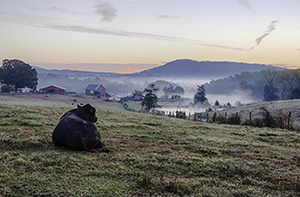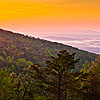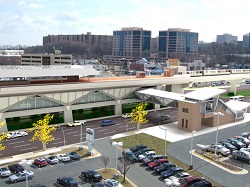Last week over 125 people gathered at the Rapidan fire hall to discuss how to protect our community and this historic and scenic landscape from the newly proposed Remington-Pratts-Gordonsville Transmission Project. From our initial look, the new 230-kv line is expensive and doesn’t address local needs.
Marco Sanchez
Sugarland Run Tree Planting — Spring 2015
On Saturday, April 25th, the Sugarland Run community planted over 160 native trees and shrubs to help reduce air and water pollution in Sterling and add beneficial habitat. Over 80 people turned out to get a little dirty and work together for the environment and enjoy a feeling of accomplishment.
Rappahannock’s Mountain Heritage: An Open House at the Thornton Gap Primitive Baptist Church
On April 11, 2015, PEC hosted our fourth annual mountain heritage celebration in partnership with Rappahannock Historical Society at Sperryville’s Thornton Gap Primitive Baptist Church. More than 250 people attended throughout the day – visitors learned about the rich culture and traditions of the families that once called these mountains home and many even walked the trails through Shenandoah National Park to see some of these former home sites in person. It was a wonderful day, filled with music, memories, and a renewed appreciation for the Blue Ridge Mountain heritage. Thank you to all who took part!
Please consider becoming a PEC member or renewing your membership to help make events like this one possible!

2014 Photo Contest Winners & Finalists
We asked you to pick your favorite photos in four different categories — Local Farms and Food, Native Plants and Wildlife, Beautiful Landscapes, and our new Youth Category. Congrats to Patricia Temples, Denise Machado, Tom Lussier, Jacob Chang-Rascle for their respective category wins!
The Future of Greene County
Greene County Public Hearing for 2015 Comprehensive Plan Update. On November 19, residents will have the opportunity to share their ideas about Greene’s future with the county Planning Commission. The commission is holding a “public hearing” to hear from residents as it begins its review of the county’s Comprehensive Plan. The current Plan was approved in 2010. This may be the only chance residents have to voice their opinions to the whole commission and influence what actually gets revised in the Plan.
Coyotes, Our Elusive Neighbors
For those of us old enough to remember when Looney Tunes ruled the afternoon cartoon television slot, the name Wile E. Coyote holds fond memories of a scrappy canine and his many failed attempts at catching the infamous and speedy Road Runner. To many children this was their first exposure to Canis latrans, who, next to the Gray Wolf, is North America’s other well-known and often misunderstood wild.
While Wile E. Coyote is known to prowl about on the flat, long desert highways of the American West, our Eastern coyote here in Virginia inhabits a different kind of backdrop. Coyotes are found in almost every environment in our state: forests, fields, suburbs, and city alleys. They are a notoriously secretive and seldom seen species. If you do happen to see a coyote, it is most likely due to chance, illness (such as rabies, mange, canine distemper, etc.), or because the animal has become desensitized to humans, which is often the result of either intentional or unintentional feeding.

Design Matters – VDOT Accepting Comments on Rt. 29 Projects
While momentum has shifted towards positive, effective improvements to Rt. 29, it’s now critical for the public to weigh in on something important — design.
Email Alert: Spectra Gas Pipeline Suspended
In early August, Spectra Energy announced it is "suspending its development work on the proposed [project]… We will continue to evaluate opportunities in the region which could include the study corridor in your area, and should there be developments, we will keep you informed."

This is Big!
The opening of the Silver Line on Saturday is a major event that is an important step towards a better future for the Washington metropolitan region and the Commonwealth of Virginia.
Maps of the Spectra Energy Gas Pipeline Proposal
Spectra Energy has announced plans for a gas transmission pipeline through Virginia. The map Spectra has released is not very detailed. However, we have used their map as a starting point for more detailed maps.
